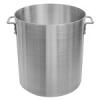I really appreciate this opportunity to discuss this topic with all you experienced people. I just want to say that while I am new to FSSC 22000 and food safety, I am not new to compliance. I am a 20+ year veteran who spent almost my whole career in quality and EHS management in a very complex chemical manufacturing plant prior to this current project. I have a lot of experience in ensuring that systems are compliant.
I am inexperienced in food systems and I am trying to understand how the community applies this certain point about releasing product that has violated a CCP limit.
Let's assume my entire food safety management system is compliant, thorough, defensible and in place for many years (i.e. tested/audited)
The language in ISO 22000 clause 8.9.4.2 states:
"Products affected by failure to remain critical limits at CCPs shall not be released, but shall be handled in accordance with 8.9.4.3"
What is meant by 'affected' ? If I can demonstrate definitely and defensibly that the safety and quality of the product was truly not affected by the failure after investigating the exceedance - and assume all other appropriate and required Food Safety protocols are compliant to regulatory and FSSC requirements - can it be released??
With that said: there is always regulatory/statutory codes, standard language, legal interpretations and then there is industry practice.
According to ISO 22000 - it seems to state that only product that has violated a OPRP action criteria can be released provided that you can demonstrate one of the conditions in clauses (a) - c) apply in 8.9.4.2.
So, with that said: What is industry practice when a CCP limit is exceeded under FSSC 22000? Is it "never" released but always either reclassified, further processed or rejected?
That is what I am trying to understand. Thank you for sticking with me on this. I really am trying to benefit from everyone's experience.
Sincerely,
Karen
Edited by oxkjs1, 19 August 2022 - 01:59 PM.




















